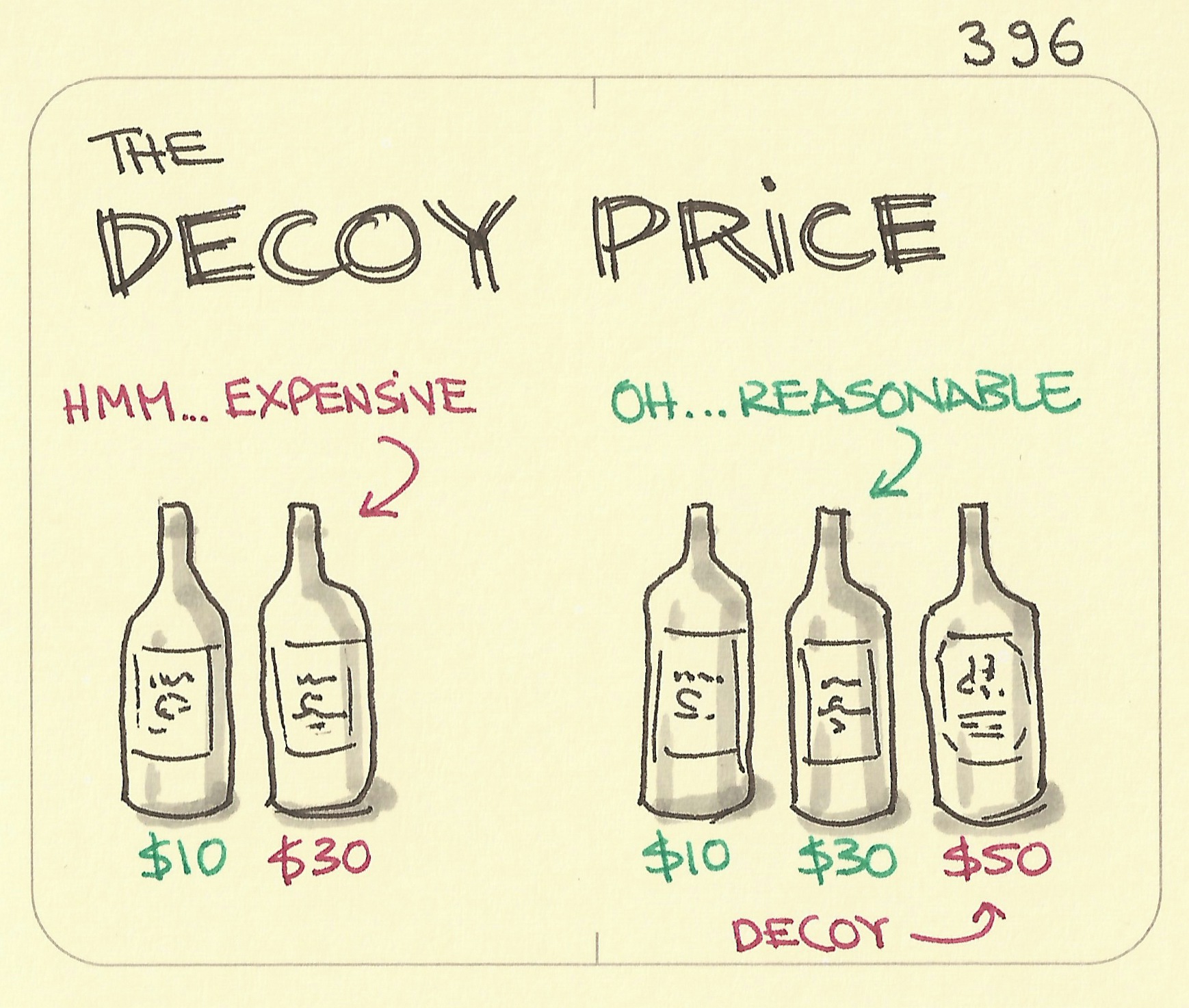The decoy price

- Copied!
👇 Get new sketches each week
The technique of adding a significantly more expensive option in order to instantly make the other options look reasonable by comparison. These kinds of manipulations have been shown to be scarily effective.
For example:
Pricing decoys are another way retailers get you to part with more money than you planned on. In his book Predictably Irrational, behavioural economist and professor Dan Ariely demonstrates how a large magazine successfully employed a strategy called the “decoy effect” to increase revenue from subscription sales. Prospective subscribers were given three choices:
1. Web-only subscription for $59
2. Print-only subscription for $125
3. Web + print subscription for $125
At first glance, the middle price point appears to be superfluous. Why would anyone buy a print-only subscription for $125 if they could get a web and print for the same price? Ariely tested the price points with MIT students and found that 16% of students chose option 1 and 84% chose option 3; not surprisingly, none chose option 2.
Then Ariely did something really interesting; on the assumption that having a decoy price (option 2) was influencing people’s choices, he removed the decoy and retested the price points. This time, the subscription choices were as follows:
1. Web-only subscription for $59
2. Web + print subscription for $125
With the decoy removed, the option that had previously been the most popular – the more expensive print + online access subscription – suddenly became the least popular choice. Only 32% of those surveyed chose the more expensive option, with 68% selecting the online-only subscription. Clearly the middle price point wasn’t superfluous; it was smart marketing that made option 3 look more attractive to subscribers.
Avraham Byers, Here’s why you should always pay full retail price , Financial Post, April 22nd 2014

